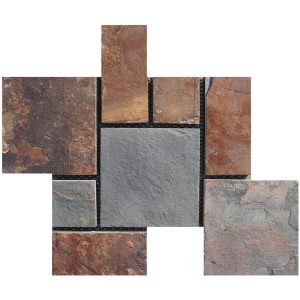Introduction
In the world of construction and architecture, the use of precast cultured stone has been gaining popularity due to its versatility, durability, and aesthetic appeal. This innovative building material offers a cost-effective alternative to natural stone while providing a wide range of design options for both residential and commercial projects. In this article, we will explore the beauty and benefits of precast cultured stone, its manufacturing process, applications in construction, and environmental sustainability.
History and Evolution of Cultured Stone
Cultured stone, also known as manufactured stone or artificial stone, has a rich history dating back to the early 20th century. The concept of creating stone-like materials for construction purposes emerged as a way to replicate the look of natural stone at a lower cost. Over the years, advancements in technology and materials have led to the development of precast cultured stone, which closely mimics the appearance and texture of natural stone while offering enhanced durability and ease of installation.
Manufacturing Process of Precast Cultured Stone
The manufacturing process of precast cultured stone involves a combination of natural aggregates, pigments, and cementitious materials to create a high-quality building product. The process begins with the selection of raw materials, including crushed stone, sand, and cement, which are mixed together to form a slurry. Pigments are then added to the slurry to achieve the desired color and texture of the stone.
Next, the mixture is poured into molds that are designed to replicate the shape and texture of natural stone. The molds are vibrated and cured to ensure that the stone has a consistent density and strength. Once the stone has cured, it is removed from the molds and finished with various techniques to create a realistic appearance, including hand-painting, sandblasting, and sealing.
Benefits of Precast Cultured Stone
1. Cost-Effective: One of the primary benefits of precast cultured stone is its cost-effectiveness compared to natural stone. Cultured stone is typically more affordable to manufacture and install, making it an attractive option for budget-conscious projects.
2. Versatility: Precast cultured stone comes in a wide range of shapes, sizes, colors, and textures, allowing for endless design possibilities. Whether you're looking to create a rustic, traditional, or contemporary look, cultured stone can be customized to suit your specific aesthetic preferences.
3. Durability: Despite being lighter in weight than natural stone, precast cultured stone is highly durable and resistant to impact, weathering, and fading. This makes it an ideal choice for exterior applications where strength and longevity are essential.
4. Ease of Installation: Precast cultured stone is designed to be easy to install, whether by professionals or DIY enthusiasts. The lightweight nature of the stone makes it easier to handle and transport, reducing labor costs and installation time.
5. Low Maintenance: Unlike natural stone, precast cultured stone requires minimal maintenance to keep its appearance looking pristine. Regular cleaning with water and mild detergent is typically all that is needed to maintain the stone's beauty for years to come.
Applications of Precast Cultured Stone
Precast cultured stone is a versatile building material that can be used in a wide range of applications, both interior and exterior. Some common applications of precast cultured stone include:
1. Exterior Cladding: One of the most popular uses of precast cultured stone is as an exterior cladding material for homes, commercial buildings, and landscaping features. Cultured stone can be used to enhance the curb appeal of a property and create a visually striking facade that mimics the look of natural stone.
2. Fireplaces and Chimneys: Precast cultured stone is a popular choice for creating stunning fireplaces and chimneys that add warmth and character to a space. The stone can be customized to match the style of the room and create a focal point that draws the eye.
3. Accent Walls: Cultured stone can be used to create accent walls in interior spaces, adding texture and visual interest to a room. Whether used in a living room, kitchen, or bathroom, precast cultured stone can transform an ordinary wall into a stunning focal point.
4. Landscaping Features: From retaining walls and garden borders to outdoor kitchens and water features, precast cultured stone can be used to enhance the beauty and functionality of outdoor spaces. The durability of the stone makes it well-suited for withstanding the elements and maintaining its appearance over time.
Environmental Sustainability of Precast Cultured Stone
In addition to its aesthetic and practical benefits, precast cultured stone also offers environmental sustainability advantages that make it a desirable building material for eco-conscious projects. Some key sustainability benefits of precast cultured stone include:
1. Resource Efficiency: Cultured stone is manufactured using a mix of natural aggregates, which reduces the need for quarrying and mining of natural stone resources. By using recycled materials and minimizing waste, precast cultured stone helps conserve natural resources and reduce environmental impact.

2. Energy Efficiency: The manufacturing process of precast cultured stone consumes less energy compared to the production of natural stone, making it a more energy-efficient building material. This reduces greenhouse gas emissions and contributes to a greener construction industry.
3. Benefits of using stone veneer in home decor and Durability: Precast cultured stone is designed to be long-lasting and resistant to weathering, reducing the need for frequent replacements and repairs. By choosing a durable building material like cultured stone, builders can create structures that stand the test of time and reduce the overall environmental footprint of a project.
Conclusion
Precast cultured stone offers a beautiful, durable, and cost-effective alternative to natural stone for a wide range of construction applications. With its versatility, ease of installation, and environmental sustainability benefits, cultured stone has become a popular choice for architects, designers, and homeowners looking to enhance the aesthetic appeal and functionality of their projects. Whether used as exterior cladding, interior accents, or landscaping features, precast cultured stone continues to inspire creativity and innovation in the construction industry.
